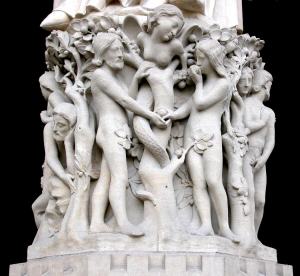The great E.O. Wilson without doubt knows more about ants than anyone else on the planet, but I would wager that he would tell you that if you put all his knowledge on one side of a balance scale, and all he doesn’t know on the other, that side would drop the weighing pan to the table, leaving his knowledge high and dry and swinging quietly in the air. He is more aware now than ever of just how much there is still to learn about ants.
It bugged me. When poet John Milton was that age, he took six years off after getting his degree from Cambridge University and read everything that have ever been written up to that time — at least everything he had knowledge of.
.
I doubt he read Chinese, but he did read Latin, Greek, Hebrew, French, Italian, Spanish, Dutch and even Old English, and while there were surely myriad books he was simply unaware of, other than those, he managed to read everything as far as he knew, that had ever been written. Everything.
.
By 1967, that was no longer possible for me. By then, even scientists could no longer even read everything just in their own field. There was too much. Now, it is even worse. Words are being written faster than they can be read, faster than they can be cataloged, faster than voice-recognition software can translate them. We are buried under a vast refuse pile of publication and the gulls swarm, circling overhead, squawking.
.
One then makes a choice — do you dive deeper into a single field, and learn all you can about ants, or about the use of the ablative case in late Roman literature, or perhaps the transfer of spin in subatomic particles, or do you attempt to skim the surface of it all and gather bits of flotsam from every field.
.
As for me, I didn’t really have a choice. I have become less interested in any single particular, and more interested in the way all these particulars relate to each other. I made a distinction between what I called the “tree of knowledge” and, on the other hand, “fact confetti.”
.
We all know fact confetti. In high school, we had to learn dates: 44 BC, AD 1066, 1492, 1588, 1776, 1848, 1914 — but they too often remained discrete bits of factoid unrelated to each other, except by needing to know them for tests. The snow of confetti piled up: subtrahend, pluperfect, atomic number, Bonaparte, establishment clause, hypotenuse, bicameral, manifest destiny, cosine, topic sentence, supply and demand, and something about my aunt and her pencil. It was a blizzard.

Scene at base of trumeau, south portal, west facade Notre Dame de Paris: Eve eats of the forbidden fruit and hands apple to Adam, while serpent is seen as part woman.
Clearly, the frontiers of knowledge are expanded by the first choice, by those who dare to pick apart the minutiae, get their Piled-Higher-and-Deeper and condemn themselves to a life in which the only people they can talk to are others who share the same fragments of existence. But a problem occurs when such profoundly learned people venture outside their own spheres. What can an entomologist have to say about the ablative case? Or a Dante scholar say about differential calculus?
 Obviously, the specialists cannot, and don’t need to. But someone does. Someone has to see the forest and not the trees, or the trees and not just one leaf or another. That is for those of us who have taken the second choice. Those whose curiosities cannot settle, who hover over every thought, every field, and wish not to write a peer-reviewed paper, but, like Denis Diderot, write an entire encyclopedia.
Obviously, the specialists cannot, and don’t need to. But someone does. Someone has to see the forest and not the trees, or the trees and not just one leaf or another. That is for those of us who have taken the second choice. Those whose curiosities cannot settle, who hover over every thought, every field, and wish not to write a peer-reviewed paper, but, like Denis Diderot, write an entire encyclopedia.Richard Nilsen inspired many ideas and memories at the salons he presented through the years when he was an arts critic and movie, travel, and features writer at The Arizona Republic. A few years ago, Richard moved to North Carolina. We want to continue our connection with Richard and have asked him to be a regular contributor to the Spirit of the Senses Journal. We asked Richard to write short essays that were inspired by the salons.





